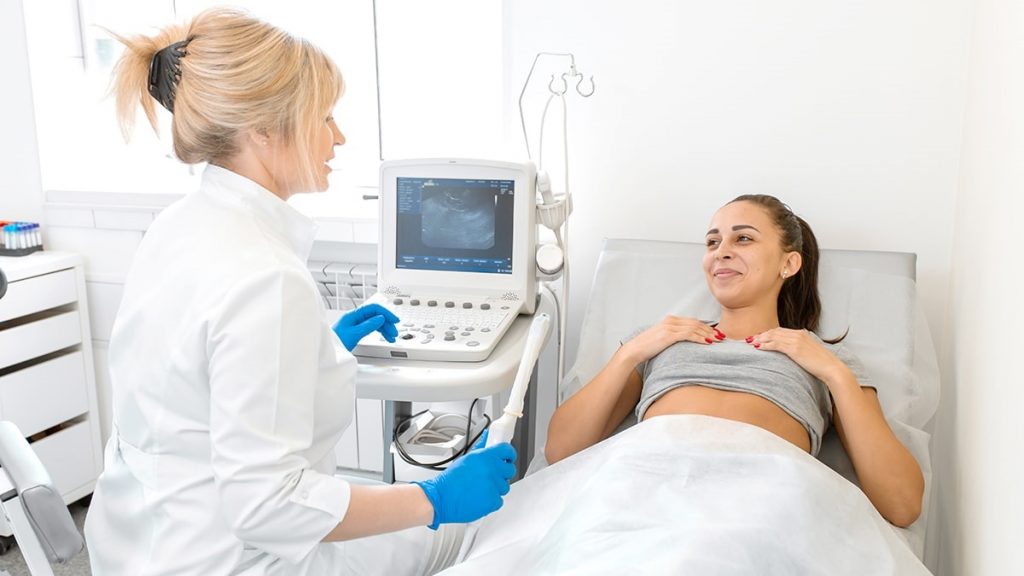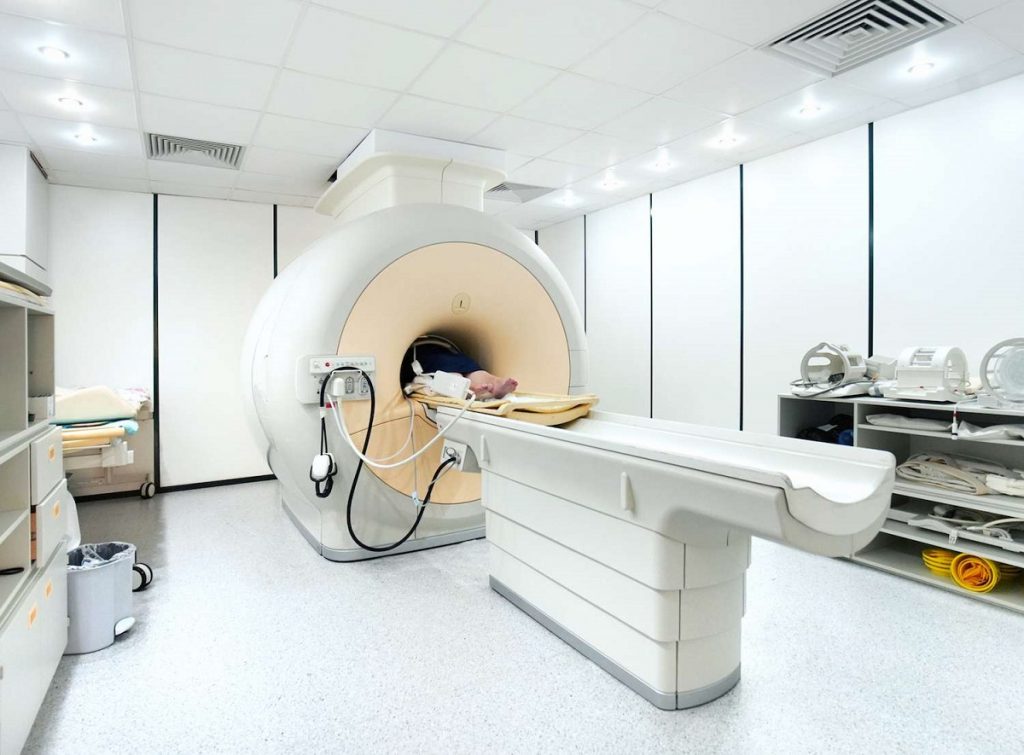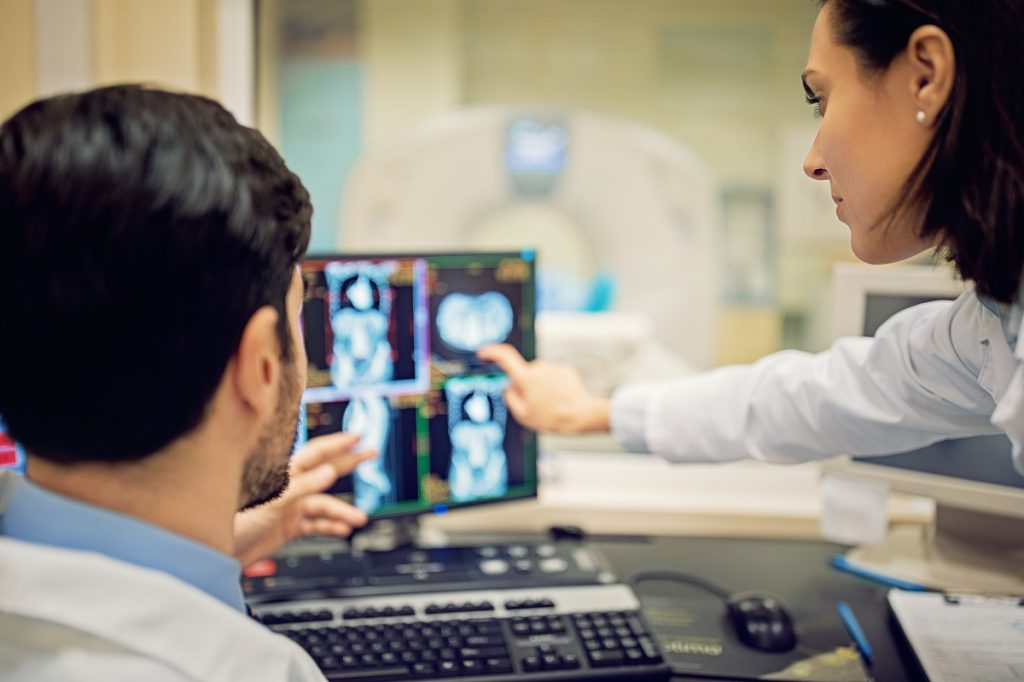Wondering if you have fibroids? Maybe you are experiencing symptoms. Possibly your mother, grandmother or sister had them. It could be that you are at higher risk. Regardless of the reason you are wondering about fibroids it is best to seek a professional. Your doctor may be able to get an idea of whether you have fibroids by performing a routine pelvic exam during your gynecologic visit. To know for sure and get a better picture of your situation, a few tests can confirm your fibroid diagnosis and help guide treatment options. Ultrasound, CT scan, and MRI are all forms of electronic imaging doctors may use to find fibroids. They are quick, safe, and painless. Each of them serves a unique purpose in helping your doctor with proper fibroid diagnosis.
Fibroids Are the Most Common Non-Cancerous Tumor in Women
Three out of four women will receive a uterine fibroid diagnosis during their lifetime. Uterine fibroids are benign lumps that grow in the muscle tissue of the uterus. According to The Office on Women’s Health, about 20 to 80 percent of women develop them by the time they reach age 50. Many are unaware they have fibroids. However, there are several factors that cause them to grow.
Depending on your situation, you may have one or several fibroids. Fibroids may differ in size and not cause any symptoms or grow, becoming large and causing painful issues. As a result, you could experience any or all these symptoms:
Some women do not experience fibroid symptoms, so treatment may not be recommended, but that does not mean they won’t eventually develop symptoms. Therefore, it is important to remain diligent in showing up to your annual visits with your gynecologist or family doctor. They can keep a record of any size and symptom changes.
How Do I Know If I Have Fibroids?
Fibroids are so common that if you have several fibroid symptoms like the ones mentioned above, your chance of having one or more uterine fibroids is high. One way your doctor may discover your condition is with a pelvic exam. During this process, your doctor will gently press on your pelvis with their hands and explore the region. If fibroids exist, they may cause the uterus to expand. Some women have very large fibroids causing the uterus to enlarge to up to 10 times its normal size. For example, a woman whose uterus is very expanded may feel or look like she is pregnant. Your doctor will be able to notice this rather quickly.
In addition, your doctor might be able to feel the fibroids. But to confirm a fibroid diagnosis, your doctor will likely order one or more of the following imaging tests: ultrasound, CT scan, or MRI.

1. Ultrasound
One of the easiest and most common imaging tools for fibroid diagnosis is ultrasound. It is also a test that nearly every woman is familiar with, given that the procedure mimics what is used to evaluate pregnancy. As a result, ultrasound is usually the very next step after a pelvic exam.
Ultrasound uses sound waves to take a picture of your uterus. There are generally two steps to do that. The first is by rubbing conducting gel on the abdomen and then using a small wand called a transducer across the abdomen. Next, your doctor will insert an ultrasound probe into the vagina for close up pictures of your uterus. With ultrasound, your doctor can determine if you have fibroids and give you an indication on the size of each fibroid.
2. MRI
MRI, or Magnetic Resonance Imaging, is more costly than ultrasound because it uses a large, special magnet to take pictures of the body. But it is widely regarded as the most effective in fibroid diagnosis because it provides the most information. An MRI shows fibroids that are not visible on ultrasound. Pelvic MRI provides the most detail in terms of the number, size, and exact location of all fibroids in the uterus. It can also show other potential sources of your symptoms and give the doctor a better idea of which treatment is best.
Not every woman needs to have an MRI, but most women being evaluated for a possible uterine fibroid embolization (UFE) procedure will get one. Rather than have a doctor use a wand across your abdomen, you lie down on a moveable bed. When you lie down inside an MRI machine, the magnetic field temporarily realigns water molecules in your body. Radio waves cause these aligned atoms to produce faint signals, which are used to create cross-sectional MRI images.
You must remain still as the bed passes through the MRI machine, a large, donut-shaped magnet. You may be instructed to hold your breath for up to 30 seconds.
A technologist controls the MRI scanner using a computer in a different room, to keep it away from the magnetic field generated by the scanner. You can talk to the MRI technologist through an intercom and they will be able to see you on a monitor during the scan.
At certain times during the scan, you will hear loud intermittent banging and tapping noises. This is the electric current in the scanner coils being turned on and off. The duration of an MRI scan will vary but the average is 45-60 minutes per body part.

3. CT scan
For some patients, especially those who have difficulty remaining still for an MRI for upwards of 45 minutes, there are quicker imaging options. One that your doctor may suggest is a Cat scan or CT scan. With this procedure, several X-ray pictures are taken of your body from different angles. This is the only one of the three imaging tests that require some form of radiation, as it allows a doctor to see into the body. However, there is a debate as to the effectiveness of a CT scan when it comes to fibroid diagnosis.
Schedule A Consultation with Fibroid Institute Dallas
Do you have questions about your fibroid symptoms or risk for fibroids, including the best imaging tests for proper fibroid diagnosis? At Fibroid Institute Dallas, we are dedicated to treating fibroids and helping you live the life you deserve. Many doctors in North Texas refer their patients with challenging cases to Fibroid Institute Dallas for non-surgical treatment.
With over 30,000 procedures completed in 25+ years of practice, Dr. Suzanne Slonim is highly specialized in fibroids and uterine fibroid embolization (UFE) in Dallas and the North Texas area. She was voted Best Doctor in D Magazine, honored with the Dallas Business Journal’s 2020 Women in Business Award, and listed in 2020 Super Doctors by Texas Monthly. Highly rated with 5-star reviews, Dr. Slonim has become the preferred UFE provider for many physicians including gynecologists, wellness doctors, chiropractors, and general practitioners.
To learn more about the revolutionary, non-surgical, fibroid treatment, Uterine Fibroid Embolization (UFE), call 214-838-6440 or complete the form below. You must have a formal consultation before scheduling your procedure. Telehealth consult and/or an in-office appointment are available.
"*" indicates required fields
Fibroid Institute Dallas serves the DFW area, including Cedar Hill, Lancaster, Cockrell Hill, Grand Prairie, Arlington, Hutchins, Irving, Highland Park, University Park, Park Cities, Garland, Mesquite, Richardson, Addison, Carrollton, Plano, Allen, Dallas, Duncanville, DeSoto, and all of North Texas.
This information is not a substitute for professional medical advice. Prior to starting any new treatment or questions regarding a medical condition, always seek the advice of your doctor or other qualified health provider.

